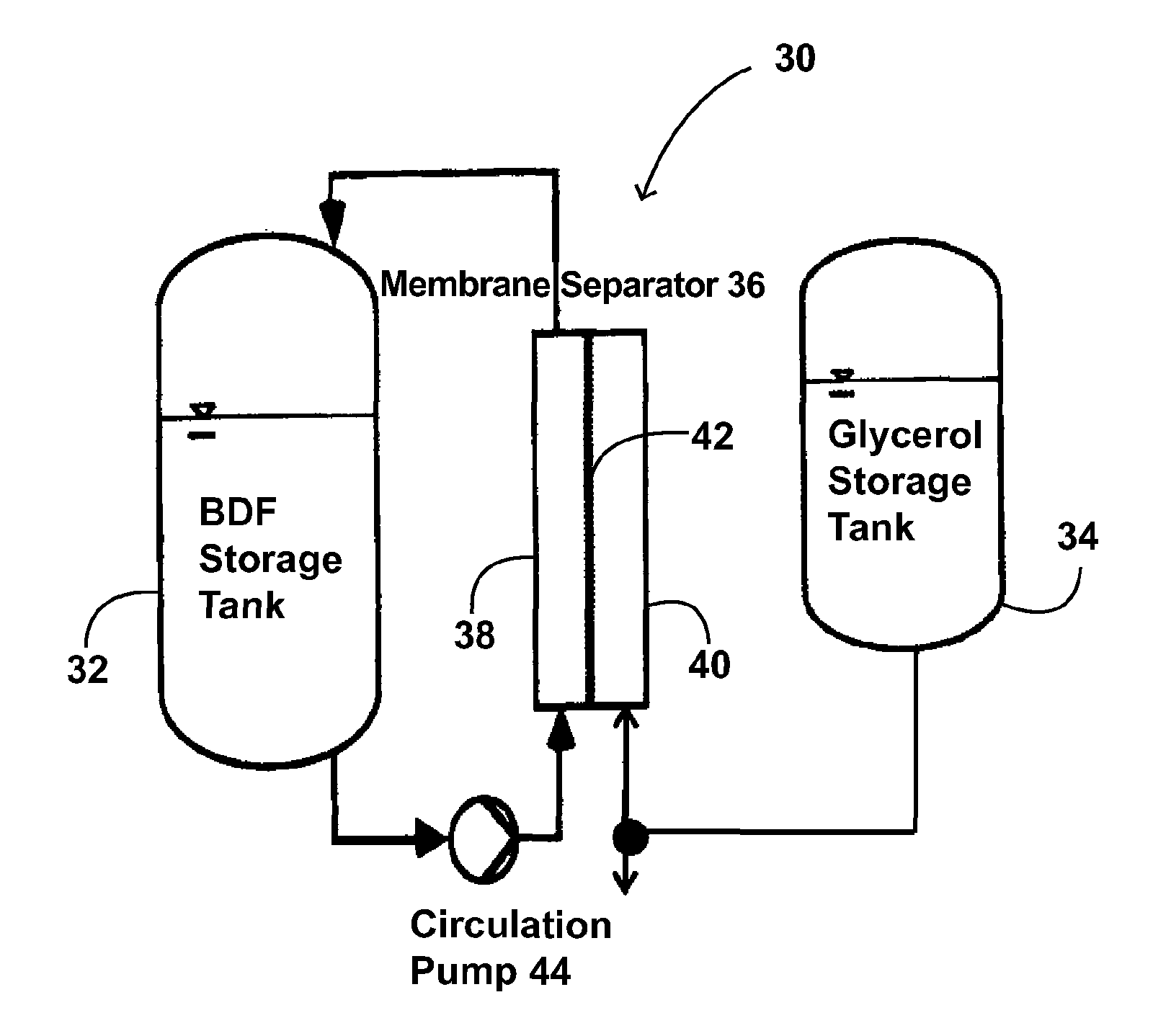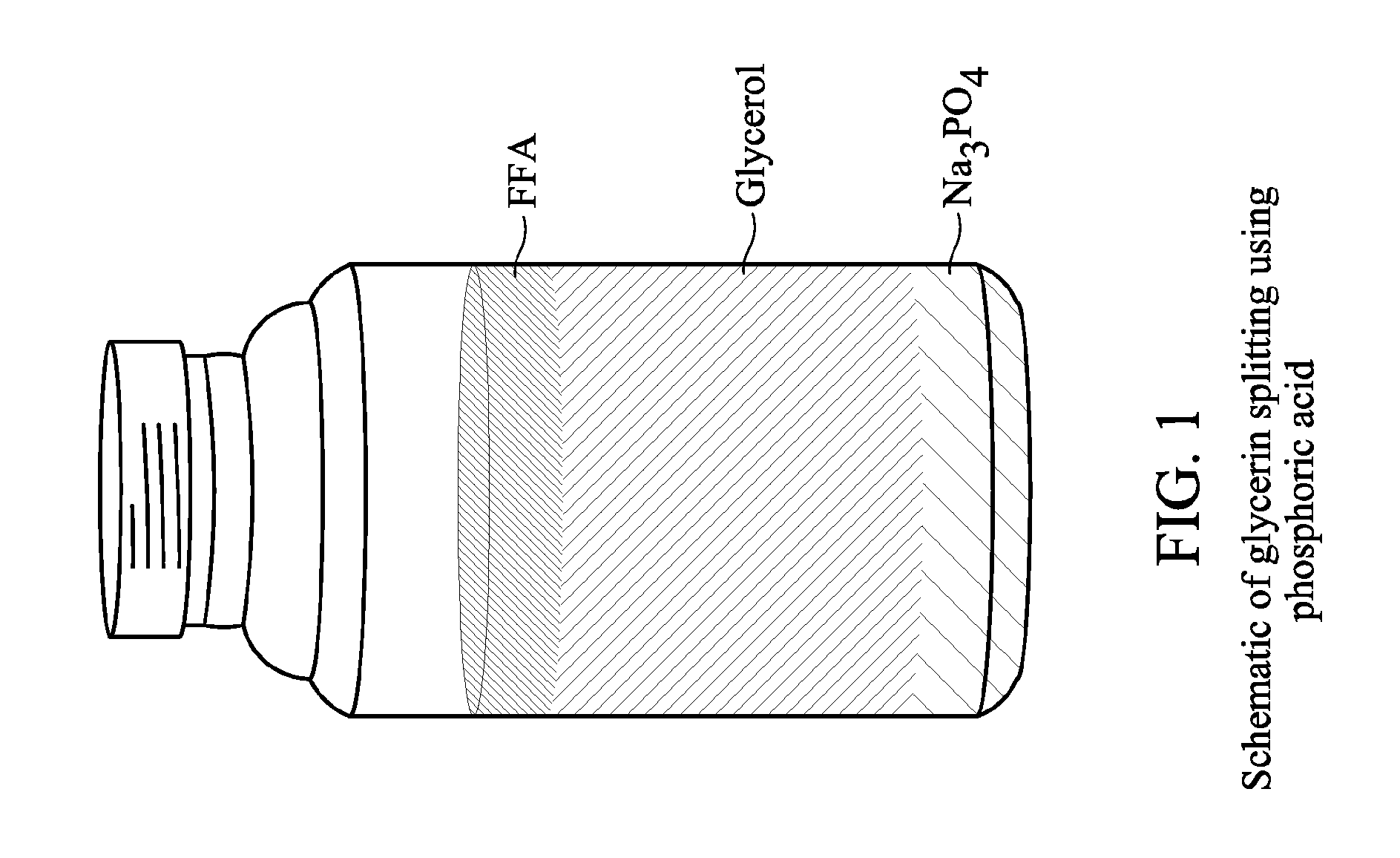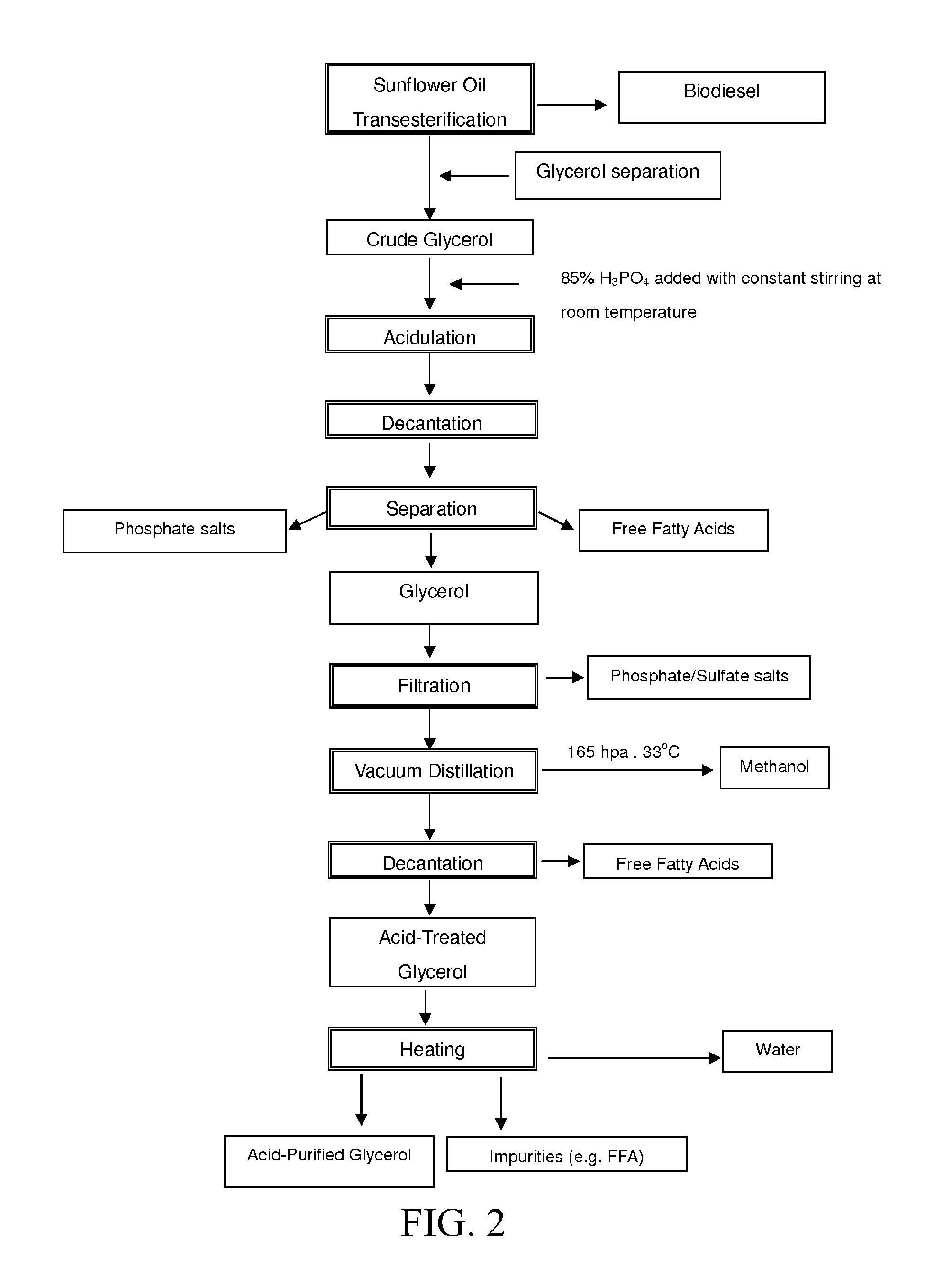Methods and apparatus for controlling moisture in plant oils and liquid biofuels
a technology of liquid biofuels and plant oils, applied in the direction of fatty-oils/fat refining, inorganic chemistry, water/sewage treatment, etc., can solve the problems of acid inducing metal corrosion, forming deposits in fuel tanks and fuel pipe lines, etc., and achieves the effect of enhancing the hydrolysis of bd
- Summary
- Abstract
- Description
- Claims
- Application Information
AI Technical Summary
Benefits of technology
Problems solved by technology
Method used
Image
Examples
examples
[0047]The following non-limiting examples are provided to further illustrate the embodiments of the methods of the invention disclosed herein. It should be appreciated by those of skill in the art that the techniques disclosed in the examples that follow represent approaches that have been found to function well in practice of the invention, and thus can be considered to constitute examples of modes for its practice. However, those of skill in the art should, in light of the present disclosure, appreciate that many changes can be made in the specific embodiments that are disclosed and still obtain a like or similar result without departing from the spirit and scope of the invention.
[0048]Biodiesel Samples
[0049]Two different kinds of biodiesel were used in the following experiments; one produced from sunflower oil and the other from waste cooking oil. Both types of biodiesel samples were used in a series of laboratory-scale experiments, while only sunflower BDF was tested during the ...
PUM
| Property | Measurement | Unit |
|---|---|---|
| temperature | aaaaa | aaaaa |
| molecular weight cut off | aaaaa | aaaaa |
| time | aaaaa | aaaaa |
Abstract
Description
Claims
Application Information
 Login to View More
Login to View More - R&D
- Intellectual Property
- Life Sciences
- Materials
- Tech Scout
- Unparalleled Data Quality
- Higher Quality Content
- 60% Fewer Hallucinations
Browse by: Latest US Patents, China's latest patents, Technical Efficacy Thesaurus, Application Domain, Technology Topic, Popular Technical Reports.
© 2025 PatSnap. All rights reserved.Legal|Privacy policy|Modern Slavery Act Transparency Statement|Sitemap|About US| Contact US: help@patsnap.com



